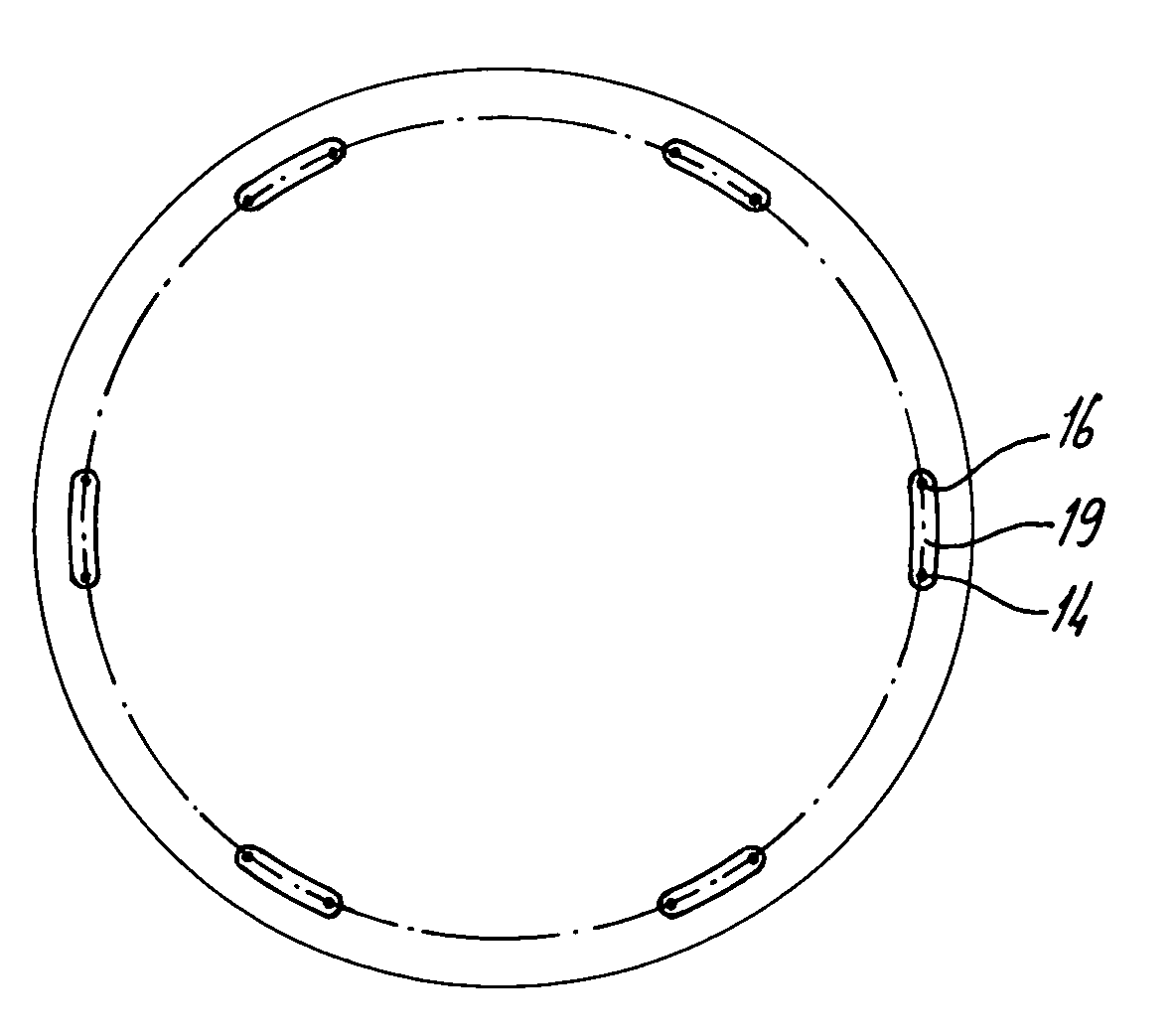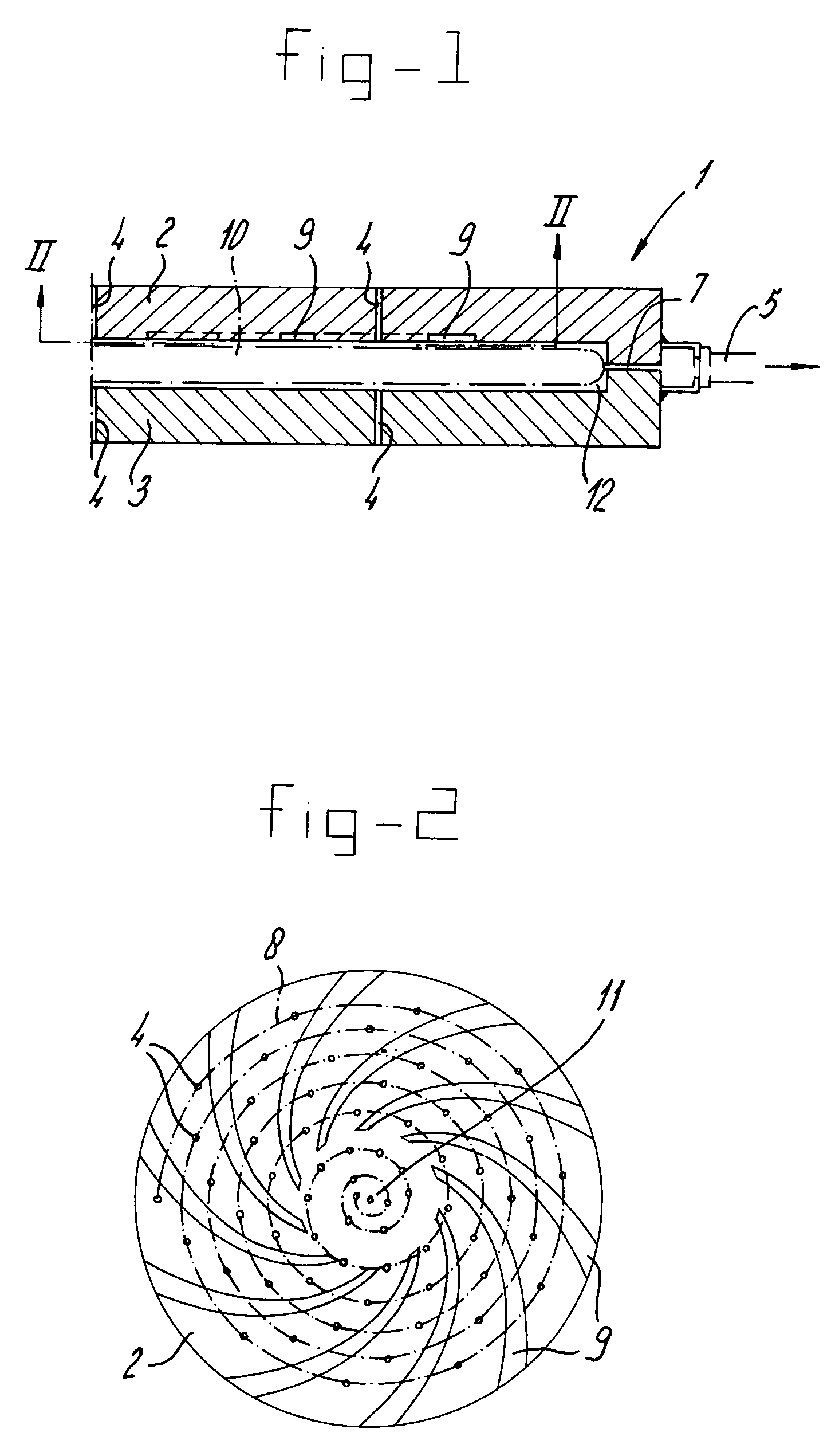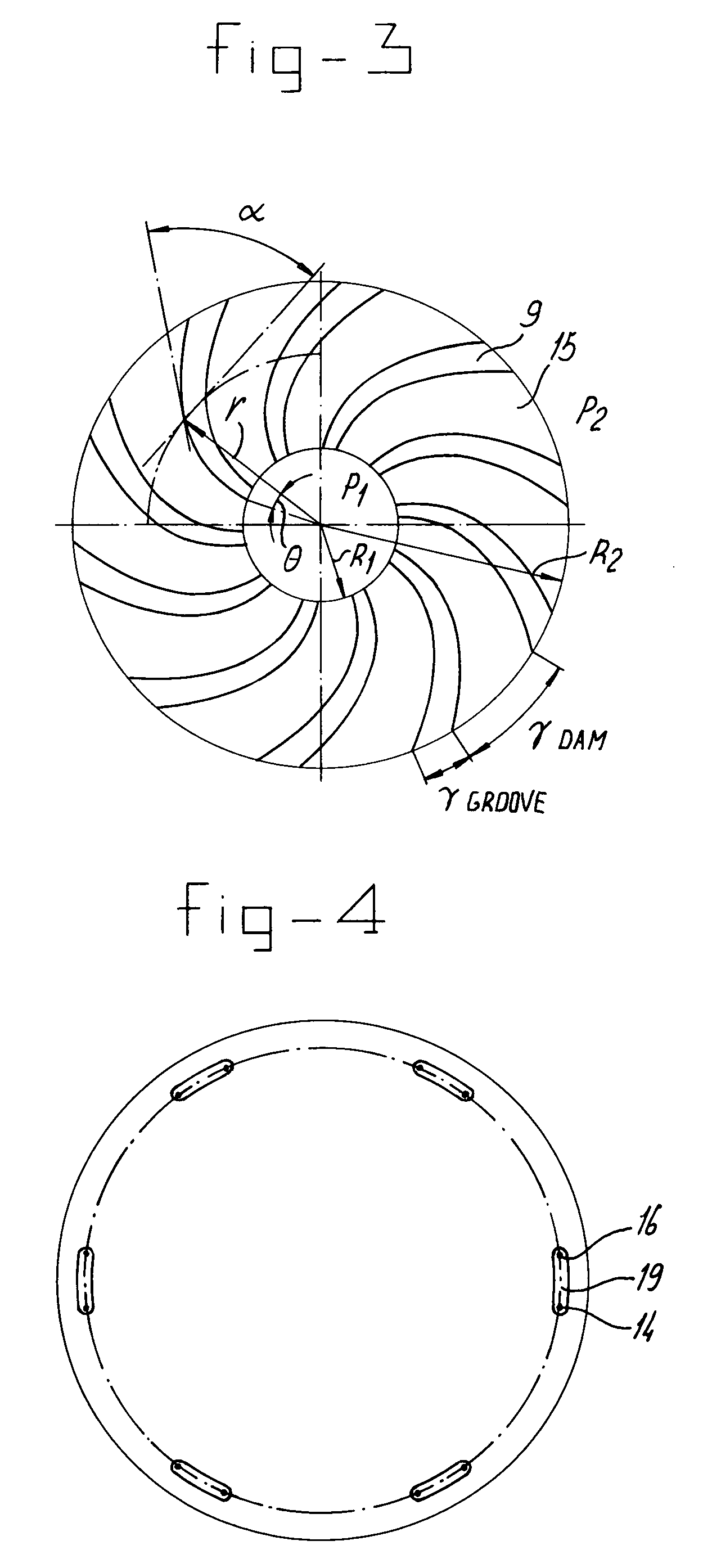Method and device for rotating a wafer
a technology of discs and wafers, which is applied in the direction of lighting and heating apparatus, charge manipulation, furnaces, etc., can solve the problems of complicated reactor walls, limited rotational speed, and difficulty in producing reactor walls of this nature, and achieves the effect of simple and inexpensive manner
- Summary
- Abstract
- Description
- Claims
- Application Information
AI Technical Summary
Benefits of technology
Problems solved by technology
Method used
Image
Examples
Embodiment Construction
[0023]In FIG. 1, a reactor is denoted overall by 1. This reactor is shown only in part and comprises a top part 2 and bottom part 3. In any desired way, which is not illustrated, a wafer 10 may be accommodated in the chamber or treatment space 12 delimited between these parts 2 and 3. The treatment gas for the wafer is introduced via gas-introduction openings 4 both above and below the wafer, and this wafer then adopts a floating position. Gas is discharged via discharge openings 7 which may be of any conceivable form and emerge at a circumferential channel 6 which is connected to a discharge line 5.
[0024]In order to impart rotation to the wafer, the top part, as can be seen from FIGS. 1 and 2, is provided with a number of grooves 9. These grooves 9 are spiral-shaped, and the origin of the spiral lies in the vicinity of the aimed centre 11 of the wafer 10. The end of the spiral is situated in the vicinity of the circumferential edge of the wafer. Grooves 9 with the shape of a logari...
PUM
| Property | Measurement | Unit |
|---|---|---|
| groove angle | aaaaa | aaaaa |
| depth | aaaaa | aaaaa |
| rotational driving force | aaaaa | aaaaa |
Abstract
Description
Claims
Application Information
 Login to View More
Login to View More - R&D
- Intellectual Property
- Life Sciences
- Materials
- Tech Scout
- Unparalleled Data Quality
- Higher Quality Content
- 60% Fewer Hallucinations
Browse by: Latest US Patents, China's latest patents, Technical Efficacy Thesaurus, Application Domain, Technology Topic, Popular Technical Reports.
© 2025 PatSnap. All rights reserved.Legal|Privacy policy|Modern Slavery Act Transparency Statement|Sitemap|About US| Contact US: help@patsnap.com



